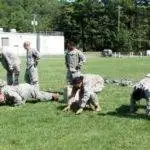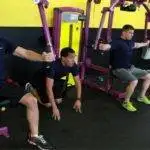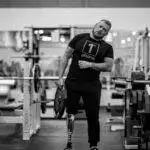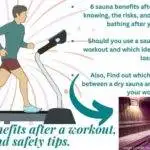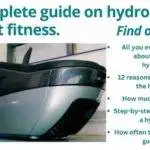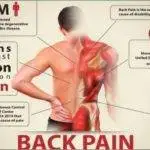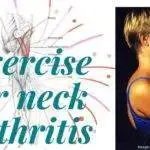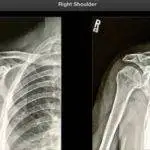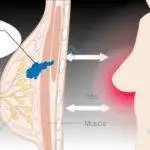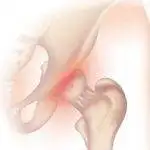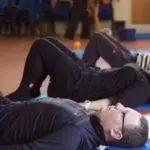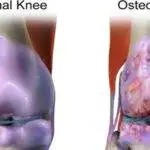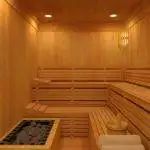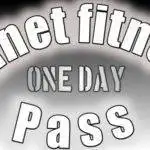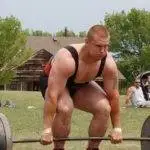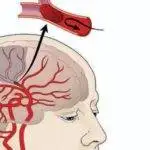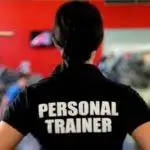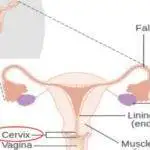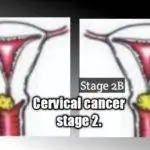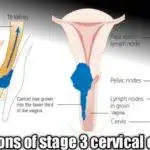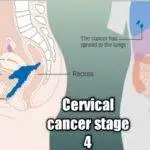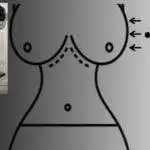
Table of Contents
Calisthenics back workouts represent a crucial component in the realm of physical fitness. They specifically target muscle tone, muscle mass, and strength in the back muscles. These workouts utilize body weight as resistance, enabling individuals to develop upper body muscle mass and strength without the need for heavy weights or advanced gym equipment.
This accessible style of training also plays a significant role in improving core strength, which is essential for maintaining proper posture. Engaging in calisthenics back workouts can alleviate issues related to lower and upper back pain, thanks to their inherent design that fosters muscle strengthening and postural correction.
For instance, performing exercises that counteract the effects of a hunch back or forward head posture leads to improved alignment of the spine, thereby encouraging a healthy cervicothoracic curvature. In line with this, a study has shown calisthenics is an effective solution in improving posture without the use of training equipment.1
These workouts are particularly beneficial for addressing conditions like reduced curvature of the lumbar spine and kyphosis thereby significantly contributing to aesthetics through the development of the ideal calisthenics body.
A well-formed back without deformities not only enhances one’s physical appearance but also promotes better breathing and increased lung volumes, fostering improved overall health. For instance, research has shown calisthenics improves lung function and reduces the risk of developing cardiopulmonary diseases even in young people.2
Throughout this article, readers will gain insights into various routines tailored to different skill levels, ensuring that everyone can incorporate these beneficial exercises into their fitness regimens.
This guide aims to empower individuals in their fitness journeys by illustrating the diverse applications of calisthenics workouts, highlighting how they can promote muscle tone, stability, and upright posture.
Do keep in touch by signing up for our newsletter:
Back calisthenics routine.
A balanced routine targeting the back muscles not only aids in the development of muscle tone but also provides benefits in aligning the thoracolumbar spine and combating issues such as upper back pain, lower back pain, hunching, or bad postures like kyphosis.
Below, we outline a series of exercises designed to be incorporated into a weekly calisthenics workout plan.
Pull-ups: Begin your routine with a pull-up, utilizing a calisthenics bar, or sturdy surface. Aim for 3-4 sets with 6-10 repetitions, resting 60-90 seconds between sets. This exercise will help develop muscle tone and mass in the upper back, aiding in the correction of forward head posture.
Inverted rows: Position yourself under a low bar or table, grasping the bar with hands shoulder-width apart. Perform 3 sets of 8-12 repetitions, ensuring that you maintain a straight line from head to heels as demonstrated below. This movement effectively engages the rhomboids and lower traps. This is also known as body weight rows or Australian pull-ups.
Superman exercise: It serves as an excellent addition for enhancing lower back strength and reducing the risk of issues such as a hunchback or gibbus. Complete 3 sets of 10-15 repetitions, resting 30 seconds in between. This bodyweight move reinforces the posterior chain, supporting a more upright posture.
Planks: focus on sustaining this position for 30-60 seconds, repeated for 3 sets. This will further strengthen your core muscles while inherently supporting your back. Keep in mind to adjust the number of sets and repetitions based on your fitness level, ensuring that each exercise is performed with proper form to optimize effectiveness and safety.
Calisthenics back workout for beginners.
For individuals new to calisthenics, embarking on a back workout regimen can significantly enhance muscle tone, core strength, and overall body posture. The primary goal of incorporating back exercises is to build muscle mass while also addressing common issues such as hunching and poor posture.
By focusing on proper alignment, beginners can effectively counter conditions like reduced lumbar curvature, kyphosis, and forward head posture, which contribute to back discomfort. A foundational calisthenics back workout must include basic exercises that target both the upper and lower back.
Two effective movements are bodyweight or inverted rows and Superman lifts. For bodyweight rows, utilize a sturdy horizontal bar. Position your body beneath the bar, grasp it, and pull yourself upward while keeping your body straight. This exercise not only strengthens the upper back but also engages the core muscles to maintain proper posture.
Meanwhile, superman lifts can be performed lying face down on the ground, lifting both arms and legs simultaneously. This targets the lower back and helps combat lower back pain. It also works on the upper back because of the involvement of the hands.
Common mistakes to avoid include hunching the shoulders during exercises and overextending the lower back. It is crucial to maintain a neutral spine throughout the movements to prevent injury and promote postural correction.
Beginners should also focus on controlled movements rather than rushing through sets. Gradually increasing the difficulty level can be achieved by elevating feet during bodyweight rows or increasing the hold duration in Superman lifts.
Advanced calisthenics back workout.
For those who have mastered the foundations of calisthenics, advancing your back workout can significantly enhance muscle tone, core strength, and overall body dynamics.
Incorporating advanced techniques and exercises such as muscle-ups, one-arm pull-ups, and various modifications to standard moves can present new challenges that stimulate muscle growth and strength.
These advanced exercises not only target the upper and lower back more effectively but also contribute to postural correction by promoting an upright posture and aiding in the prevention of common ailments like upper and lower back pain as proven by research.3 It is not uncommon to feel some pain from over-exerting the muscles, though.
Muscle-ups, which combine a pull-up with a dip, are a potent way to develop upper body strength and improve your lung volumes through effective breathing but not as much as the effects of aerobics on lung volumes.
Successfully executing muscle-ups requires exceptional core strength and helps enhance aesthetics by developing a well-defined back. Similarly, the one-arm pull-up is an impressive feat that challenges your grip and stabilization while simultaneously engaging the entire back region.
To prevent injuries while performing advanced exercises, maintaining proper form is critical. Paying attention to alignment can help avoid conditions such as lordosis and back pain from strains and overuse.
Individuals must practice progressive overload by gradually increasing the intensity of their workouts. This approach not only maximizes muscle engagement but also allows for continuous improvements without compromising form.
It is essential to focus on controlled movements and breathing techniques to manage exertion levels effectively, ensuring an optimal workout experience.
Calisthenics back workout without equipment.
Calisthenics back workouts without equipment offer an excellent alternative for those seeking to enhance their muscle tone and core strength while minimizing reliance on gym facilities or calisthenics equipment. These exercises can be performed almost anywhere, making them ideal for individuals with limited access to equipment or those who prefer the convenience of calisthenics home workouts.
One highly effective bodyweight exercise is the “Superman.” This movement not only strengthens the upper and lower back but also promotes better posture by counteracting common issues such as forward head position and kyphosis.
Another beneficial exercise is the “plank to downward dog.” Starting in a plank position engages the core and back muscles as shown in the video below. Transitioning to the downward dog position not only stretches the spine but also encourages a more upright posture.
Incorporating “reverse snow angels” also proves useful in targeting the upper back. Lying face down, extend your arms to the sides before raising them in a sweeping motion, simulating the motion of making a snow angel as shown below. This exercise significantly aids in postural correction and can help combat the forward head posture commonly seen in modern society.
This is one of the exercises among several others a healthcrust team has used to effectively address forward head posture and hunching. For greater effect, it can be done while holding weights in both hands.
By routinely performing these no-equipment calisthenics back workouts, individuals can effectively build muscle mass and strengthen the muscles of the back, contributing to both aesthetics and improved physical well-being.
Such an approach not only addresses existing back issues but also prevents future discomfort, ensuring optimal performance in daily activities.
Calisthenics lower back workout.
The lower back is a critical area of the body that often lacks the necessary attention in typical fitness routines. Strengthening this region not only enhances muscle tone but also plays a significant role in preventing injuries related to poor posture which result in lower back pain.
In calisthenics, there are numerous exercises specifically tailored to develop lower back strength and stability. These movements not only improve muscle mass and core strength. They also contribute to postural correction and countering conditions such as intervertebral disc herniation.
One effective exercise is the body weight Superman drill as described earlier. Similarly, bridges are beneficial for targeting the entire posterior chain, focusing on the gluteus maximus while providing support to the lower back. Beginners should start with basic variations and gradually increase difficulty for optimal results.
An additional calisthenics exercise that enhances the lower back is the plank, This exercise works the core and also engages the lower back muscles, increasing their stability and strength. By performing these movements with proper technique, one can significantly reduce the risk of lower back pain.
Consistency in executing these calisthenics lower back workouts is essential for achieving lasting results, ensuring that one maintains muscle strength, and tone, and improves overall functionality.
Upper back calisthenics without equipment.
Engaging in upper back calisthenics workouts without any equipment offers an excellent opportunity to improve muscle tone and enhance core strength while staying in the comfort of your home.
The upper back, which includes muscles such as the trapezius, and rhomboids, plays a crucial role in maintaining proper posture and preventing conditions such as kyphosis.
Some effective exercises that target these muscles, promote postural correction, and contribute to overall strength are:
- Pull-ups,
- Reverse snow angels,
- Plank to downward dog,
- Inverted rows, and
- Planches.
You’ll notice they all involve the use of the arms. In other words, calisthenics exercises that involve the arms benefit the upper back.
Full calisthenics back workout.
To achieve a balanced calisthenics regimen, it is vital to include exercises that target both the upper and lower back, ensuring the promotion of good posture and prevention of common issues such as upper and lower back pain, and forward head posture as mentioned earlier.
Begin with a proper warm-up to prepare the muscles for exertion. Engaging in dynamic stretches focused on the thoracic and lumbar regions will enhance blood flow and flexibility. Arm circles, torso twists, and cat-cow stretches are excellent choices to transition into the workout, reducing the risk of injuries related to muscle strain.
The main workout can consist of bodyweight exercises such as inverted rows, superman’s, planches, and planks which effectively target both the upper back and the lower back. Supermans are advantageous in addressing issues related to compromised or reduced lumbar curvature while reducing the risk of lower back pain.
Adding a plank variation can also enhance core stability and overall muscle strengthening, an essential aspect of a calisthenics back workout. Planche is similar to plank but rather than rest on the lower arm, in planches the upper body is supported with straightened arms.
After completing the main workout, a cooldown phase should follow to aid recovery and muscle relaxation. Gentle stretches targeting the upper back, such as the child’s pose and cross-body shoulder stretch, can help alleviate tension.
Best calisthenics back workout.
When it comes to developing a well-rounded upper body, a strong back is essential in correcting postural imbalances.
By integrating various exercises targeting the upper and lower back, practitioners can effectively alleviate issues related to back pain, and other postural conditions like kyphosis. However, the specific calisthenics exercises that best address specific back pathologies have to be prescribed by a trained healthcare provider in a relevant field.
In the absence of any back pathology, what can qualify as the best calisthenics back workout is subjective. In other words, it depends on individuals’ choices and workout objectives.
Among the most effective exercises for achieving your calisthenics fitness goals are bodyweight rows, pull-ups, and arch-ups.
Another beneficial exercise is the superman, which targets the lower back, and helps combat hunching, and forward head posture. By engaging the glutes and the entire posterior chain, this exercise promotes the correct lumbar curvature, thereby supporting overall postural correction.
Additionally, resistance band exercises can be valuable for those who prefer progressive overload without weights, allowing for controlled muscle engagement and strength building.
Consistency is key to maximizing the effectiveness of a calisthenics back workout. Novices can gradually increase the frequency and intensity of their routines to foster muscle growth and enhance body composition.
Ultimately, creating a personalized back workout routine by mixing techniques discussed here assists in achieving aesthetic goals while maintaining functional movement, thus ensuring long-lasting results.
References.
- Thomas E, Bianco A, Mancuso EP, et al. The effects of a calisthenics training intervention on posture, strength, and body composition. Isokinetics and Exercise Science. 2017;25(3):215-222. doi:10.3233/IES-170001 ↩︎
- Ina ShawStacey TurnerChristy McCrorieAshleigh SchnetlerBrandon Stuwart ShawReductions in Cardiopulmonary Disease Risk Following Calisthenic Concurrent Aerobic and Resistance Training in Young Adults in a Low Resource Setting.12(1):e106562.https://doi.org/10.5812/asjsm.106562. ↩︎
- Moore, C., Ceridan, E., Schonard, C., Marasa, M., Shaib, F., & Holland, J. (2012). Prevention of Low Back Pain in Sedentary Healthy Workers: A Pilot Study. The American Journal of the Medical Sciences, 344(2), 90-95. https://doi.org/10.1097/MAJ.0b013e3182364942 ↩︎























